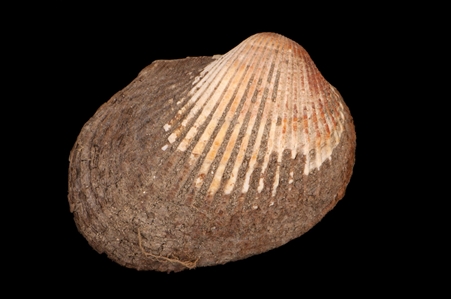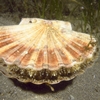Other Names
- Sydney Cockle
- Trapezoid Mud Ark
General Description
The shells of this species are heavy, obliquely ovate, with a thick external coating (periostracum), particularly at the posterior. Exterior sculpture of broad, strong, radial ribs. The adults are usually without a thread-like byssus. Shell up to 8 cm across.
Biology
This species burrows in the mud. It belongs to a group of bivalves that mainly occur in tropical waters of northern Australia, of which only three species live in Victorian waters.
Habitat
In mud, from low tide to shallow subtidal areas.
Soft substrates
Distribution guide
Southern Australia, excluding Tasmania.
Species Group
Sea snails and shells › Bivalves
Depth
Shore (0-1 m)
Shallow (1-30 m)
Water Column
Max Size
8 cm
Diet
Plankton or Particles
Commercial Species
Yes
Global Dispersal
Native to Australia
Species Code
MoV 1561
Conservation Status
- DSE Advisory List : Not listed
- EPBC Act 1999 : Not listed
- IUCN Red List : Not listed








